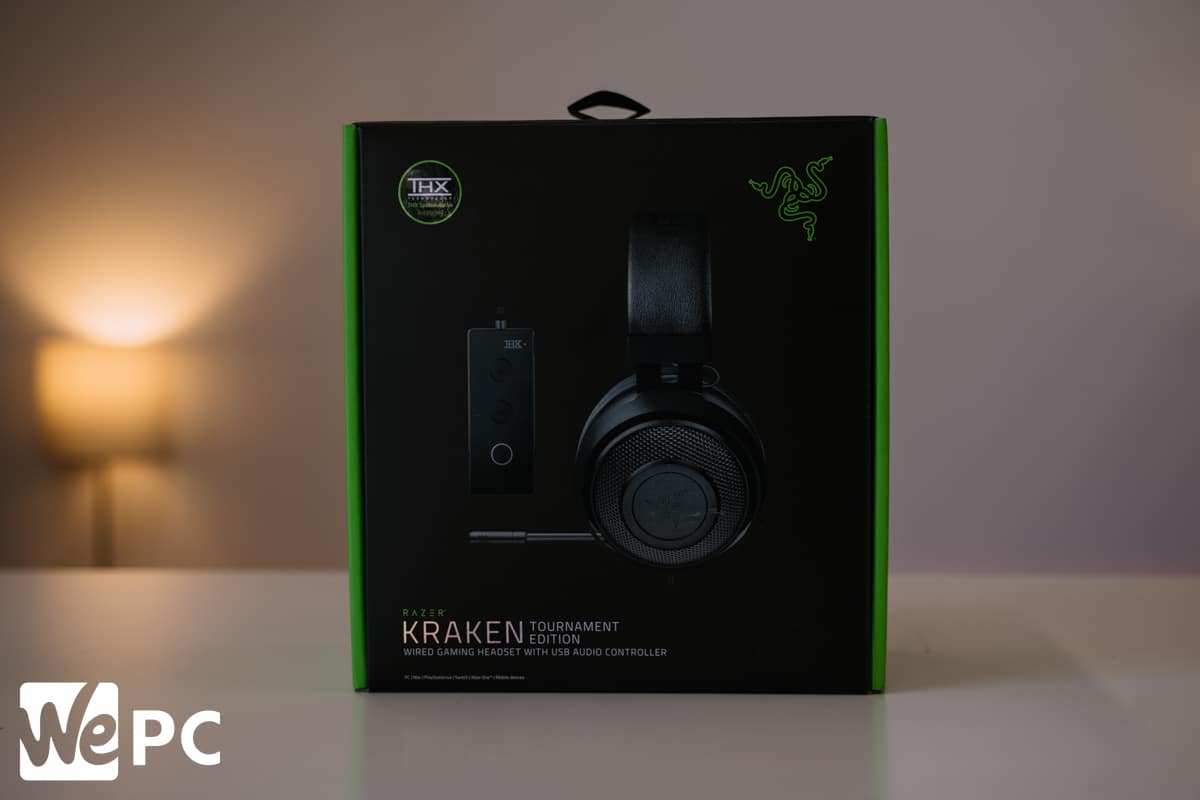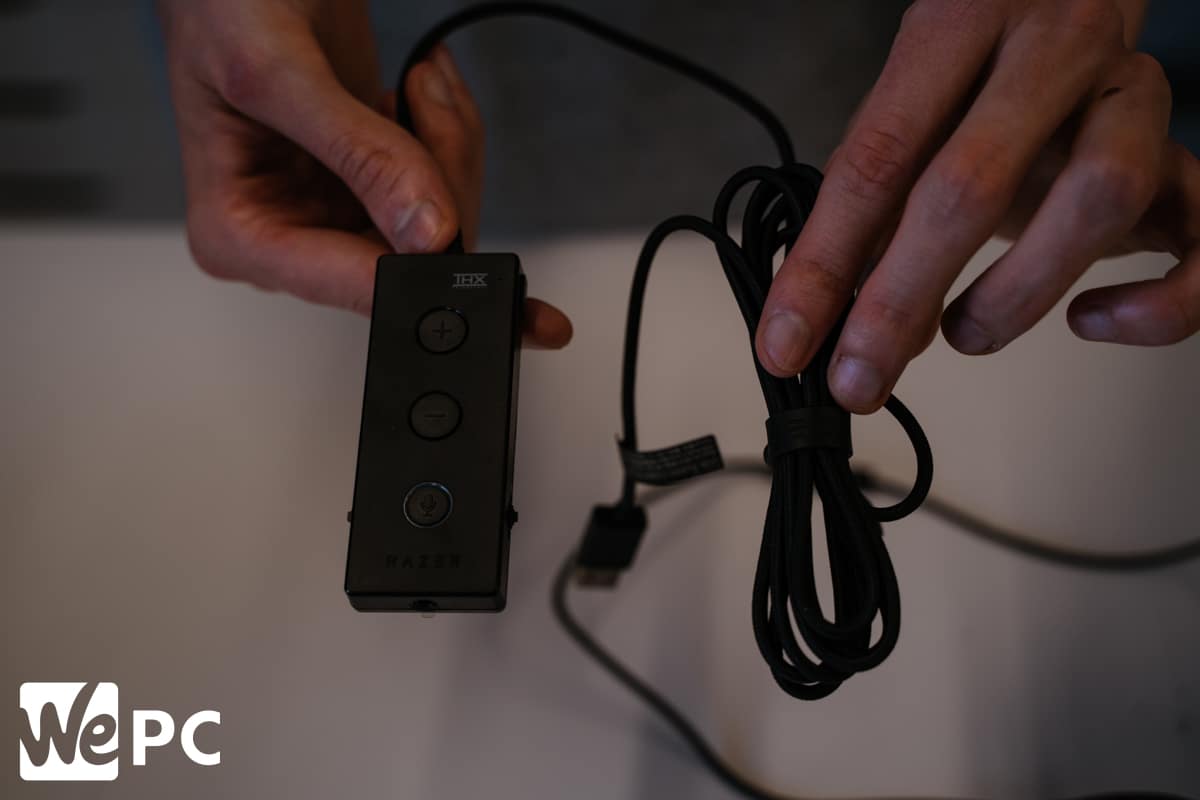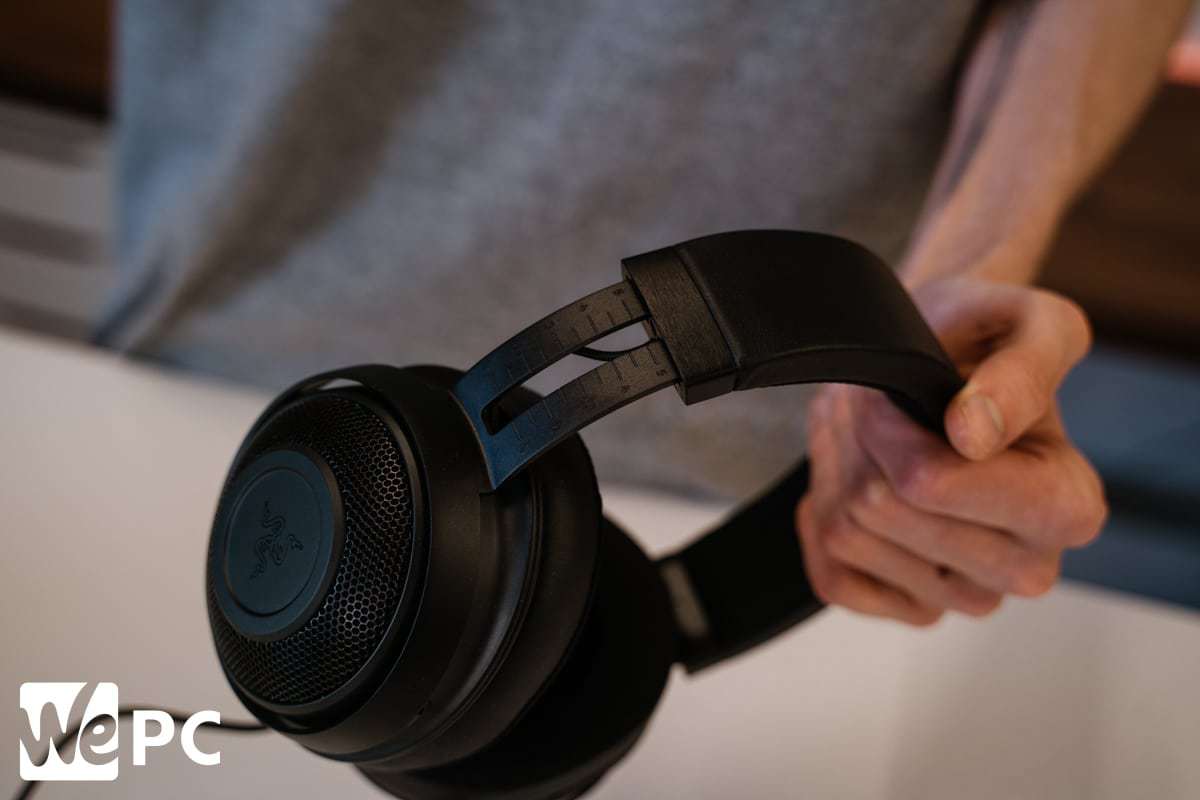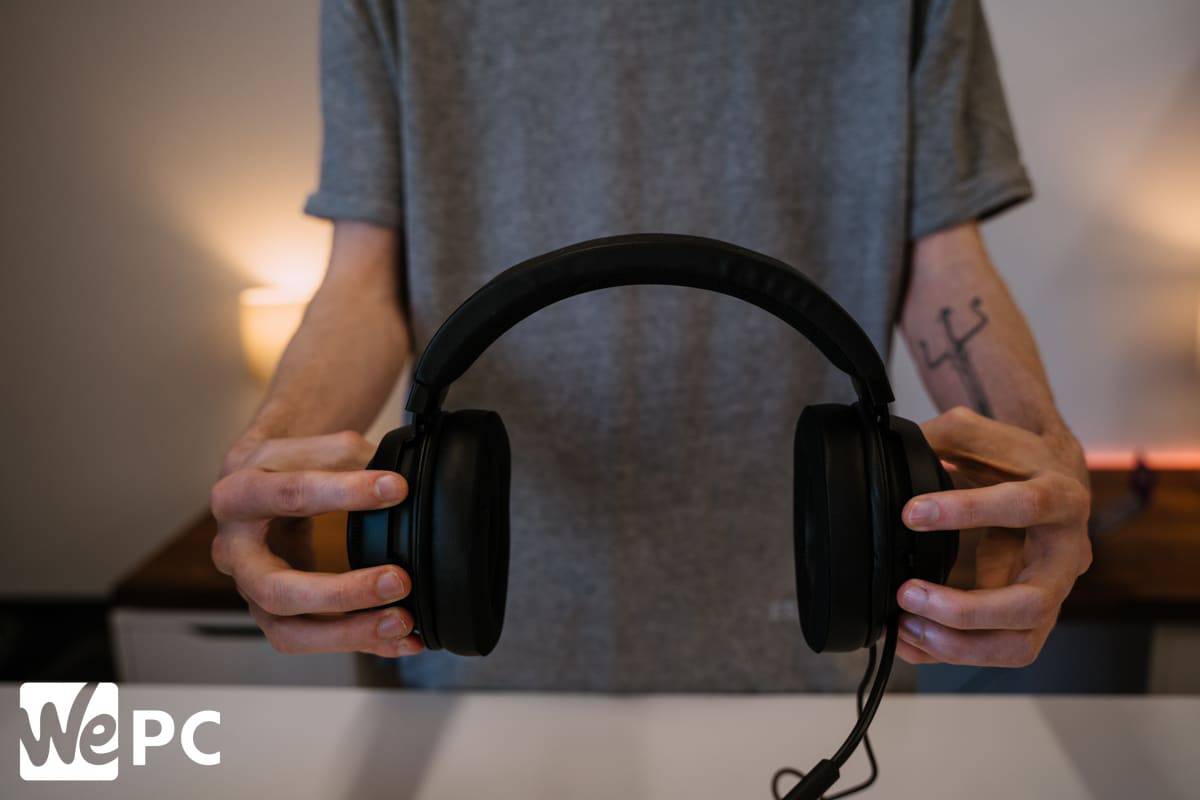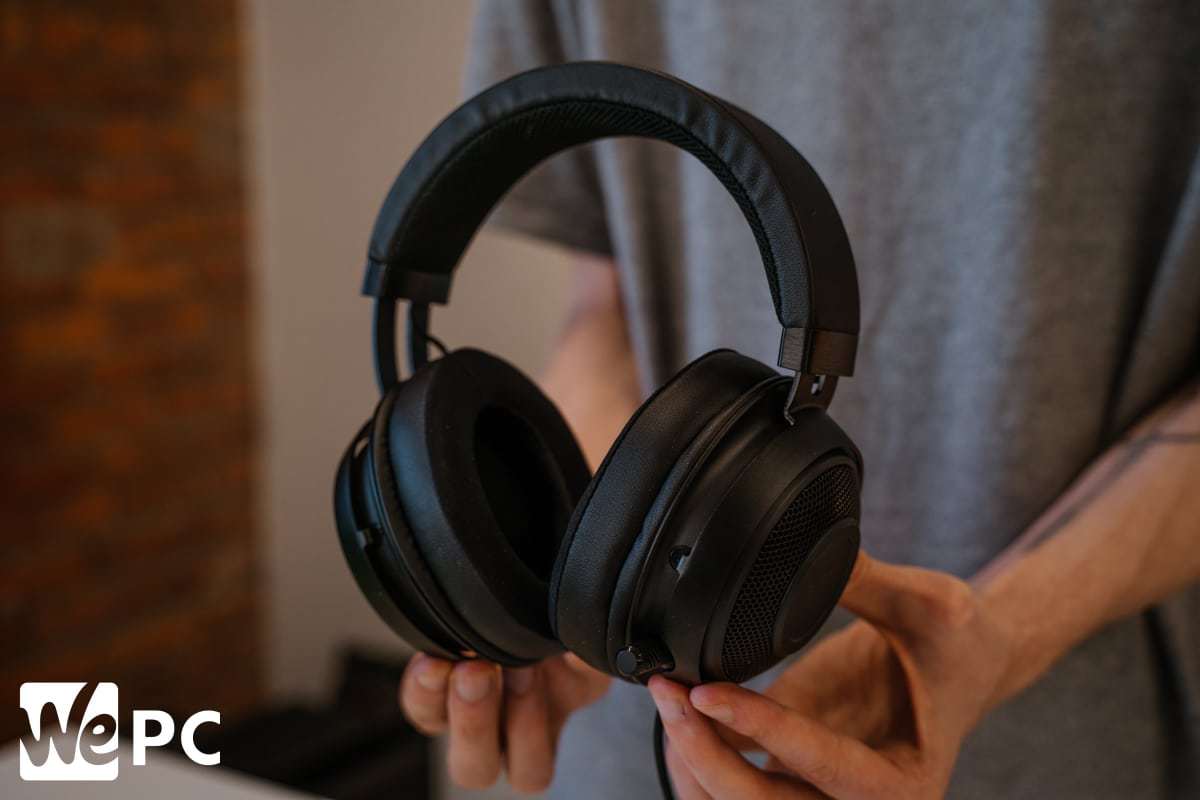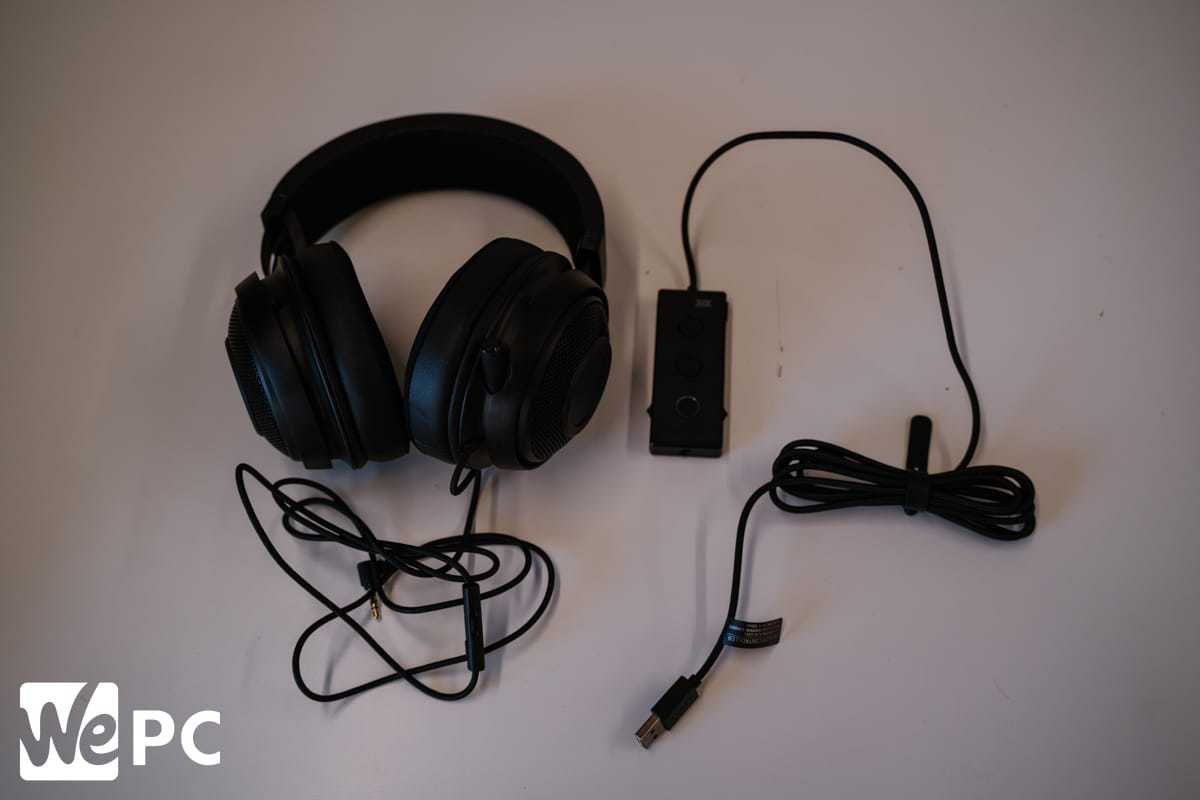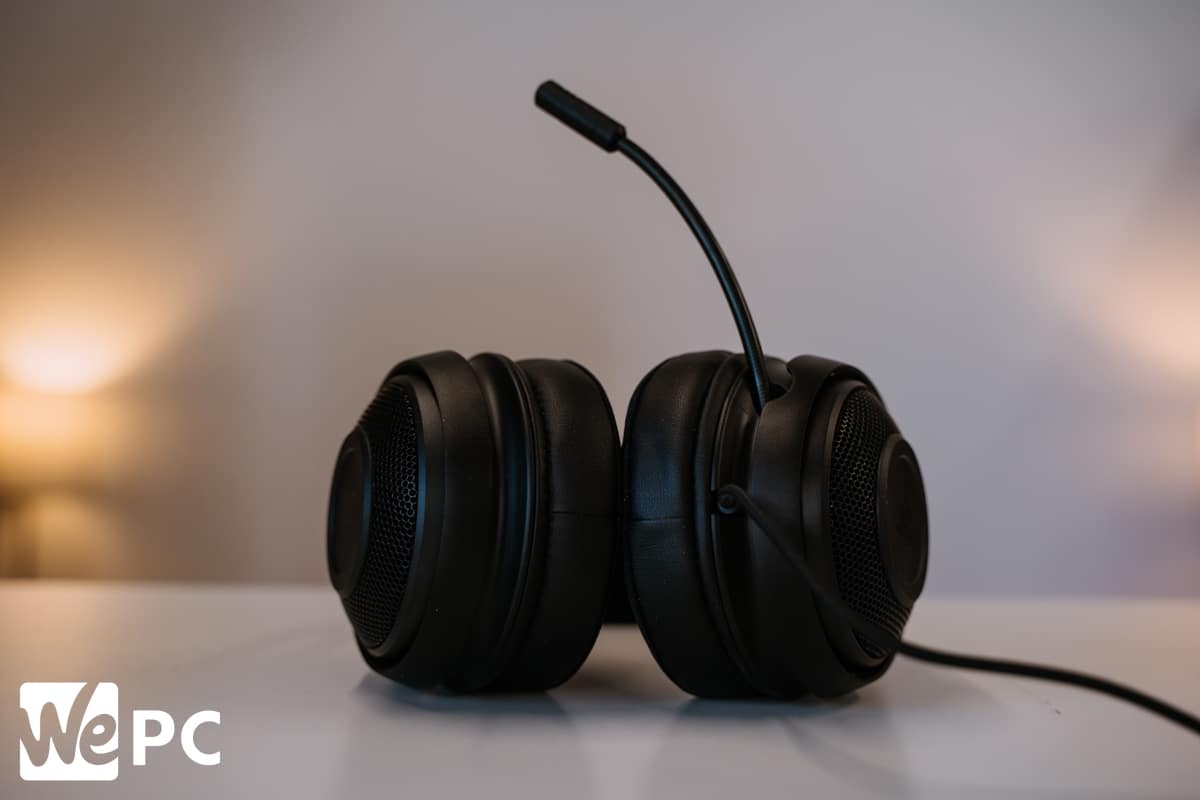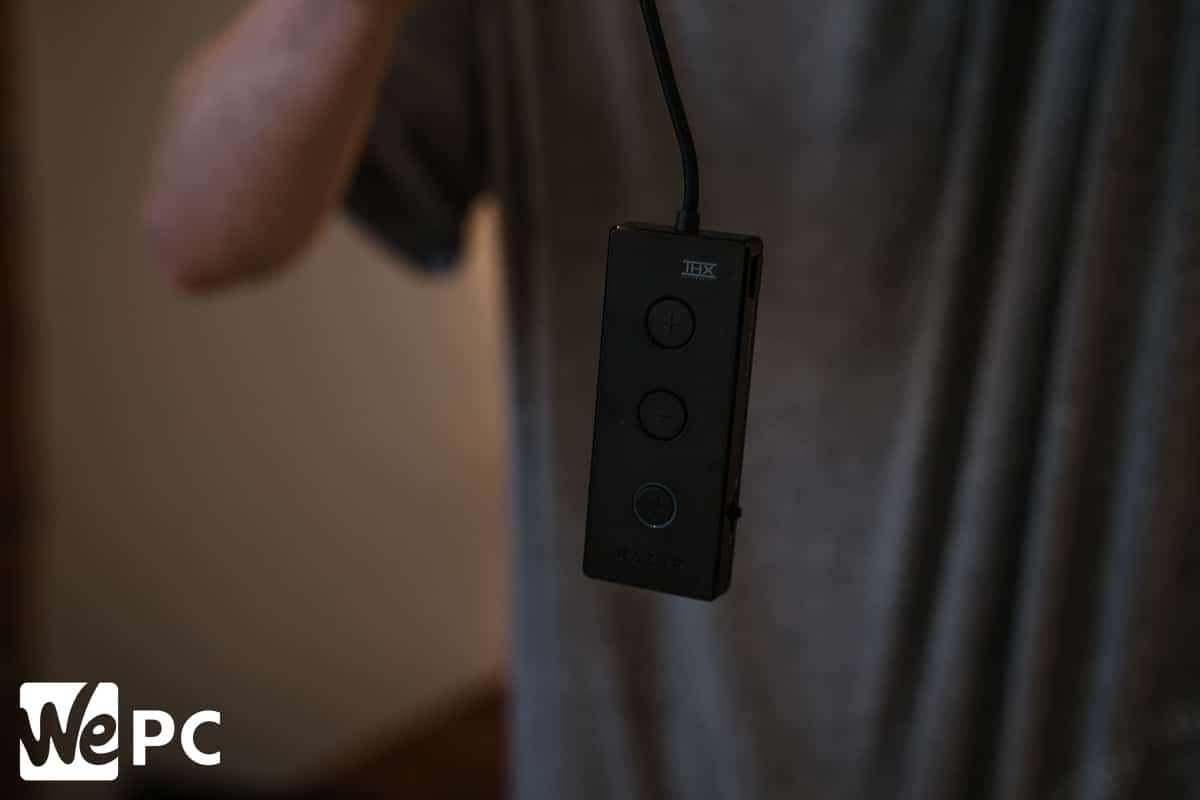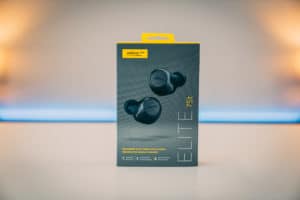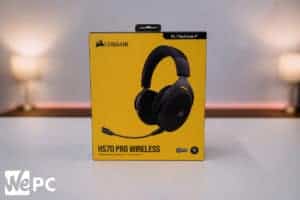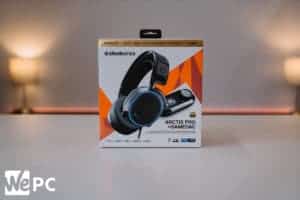Razer Kraken Tournament Edition Gaming Headset Review
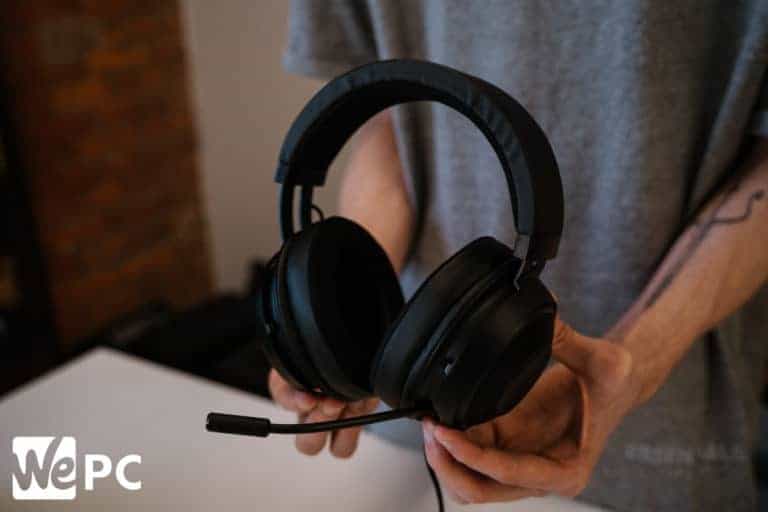
While Razer might be better known for its hugely impressive array of gaming mice (including the Razer Basilisk V2 and Deathadder V2), they’re still one of the biggest names in the game when it comes to headsets, mousepads, and keyboards.
In today’s article, we’ll be taking a closer look at one of their most popular gaming headsets, the Razer Kraken Tournament Edition headset. The Kraken TE, as we’ll call it, comes to the table boasting an array of cool features that includes THX surround sound, game/chat balance controls, a retractable microphone, and more.
We’ll be putting the Razer Kraken Tournament Edition through its paces to see how it stacks up against competitively priced alternatives in value, performance, comfort, and sound. We’ll be answering some of the big questions that surround Razer headsets and concluding whether or not we feel this headset is worth your consideration and cash.
So, with all that in mind, let’s waste no further time and get straight into it!
Specifications
Below we have outlined the main specifications of the Razer Kraken Tournament Edition gaming headset.
| Razer Kraken Tournament Edition Specs | |
| Headphone Frequency Response | 12 - 28,000 Hz |
| Wireless | No |
| Battery Life | N/A |
| Drivers | 50mm Neodymium magnets |
| Microphone | Uni-directional, noise cancelling microphone |
| Weight | 322g |
Inside the Razer Kraken Tournament Edition Box, we see:
- Razer Kraken Tournament Edition headphones
- THX Surround Sound USB dongle
- Manuals
[mks_col]
[mks_one_half]
Pros
- Great build quality
- Excellent comfort
- Retractable microphone
- Decent spatial awareness
- Feature-packed USB dongle
- Multi-platform versatility
[/mks_one_half]
[mks_one_half]
Cons
- Sound quality isn’t great for music
[/mks_one_half]
[/mks_col]
Setup
Setting up the Razer Kraken Tournament Edition headset certainly wasn’t as easy as the Razer Kraken X’s we reviewed recently. Thanks to the addition of the feature-packed USB dongle, you can’t just plug this headset in and starting popping heads. There are a few extra steps required to utilize this headset to its full potential.
For users who require plug-n-play, you can discard the USB dongle and just use the 3.5mm audio cable in your chosen device. Then again, if that’s the case, you probably wouldn’t buy this headset – would you? To utilize all the features this headset has to offer, you will need to download and install the Razer Synapse software suite.
After doing so, you’ll have access to EQ controls, THX surround sound, microphone tweaks, and more. We’ll touch upon the controller in full shortly, but for now, those are the steps required to set up the Razer Kraken Tournament Edition headset.
Design
As you’d expect, the Kraken Tournament Edition headset keeps the Kraken family design traits that we’ve seen across many of their iterations in the past. While the Krakens are still looking fairly “gamey”, they aren’t half as obnoxious as other gaming headsets currently in today’s market. Having said that, I still wouldn’t be strolling around town wearing these anytime soon, they just aren’t that versatile.
The Kraken TE’s are equipped with two large circular closed-back earcups that encase your ears in their entirety. The earpad lining is a combination of premium-feeling materials that offers superb comfort and durability. Faux leather can be found on the outside of the earpad for styling purposes, whilst a soft breathable fabric is used on the inside area that directly touches the face. Memory foam is the prominent material used for the padding itself, with a cooling gel layer on top to ensure things don’t get too sweaty when in the heat of battle.
The headset feels well made and offers a mixture of hardy materials that include both plastic and steel. The headset comes in a couple of different color variations (one of which is neon green), however, we’ll be reviewing the all-black version in today’s article. While Razer hasn’t gone overkill with the branding here, their logo is still subtly embossed into both earcups and across the headband.
The earcups, while made of plastic, do have a steel mesh layer on the outside which looks cool and feels very sturdy. The headband, like most of today’s offerings, comes with an adjustable mechanism – giving around 30mm of extra headspace for those that need it. The headband is laced in faux leather with a large cushion on the underside and finished with more breathable fabric.
The microphone is fully retractable, slender in design, and almost identical to other Kraken models. While there are no volume controls attached to the headset itself, you do have inline controls on the cable for on-the-fly changes. Furthermore, the USB dongle offers a whole bunch of additional extras that we’ll touch upon shortly.
Overall, from a design point of view, I have to say this is one of the better Razer headset offerings out there.
Build Quality
Build quality is always an area that has disappointed me with Razer products over the years. However, on first impressions, I feel the Kraken Tournament Edition headset may be starting to break that age-old trend.
The first thing I noticed about this headset upon unboxing was just how sturdy it actually felt. You can tell straight away that this is a major step up from their Kraken X headset. Quality materials are used throughout, with metal being preferred in the more vulnerable areas of the headset (headband, earcup forks, etc.).
Speaking of the headband, this is usually an area of failure in many budget to mid-range gaming headsets. However, with the Razer Kraken TE, the headband is the least of my worries. The adjustable mechanism is definitely on the stiff side – in a good way – making me assume it will probably stand the test of time. The aluminum used in the headband itself offers excellent durability and flexibility – excelling in our rigidity tests across the board.
The earcups feel very well made and I’m in no doubt they could handle a couple of excessive rage quits, to say the least. The steel mesh re-inforces the already durable plastic to make a very strong end product.
On a less positive note, the earcup lining – which I believe is non-replaceable – could be an area of concern in months to come. It feels a little flimsy and could start to come away from its housing. Also, with extremely flexible microphones such as this one, I’ve found they start to go after a year or so. Obviously, we can’t make assumptions based on that, but it’s certainly worth noting.
Ultimately, whilst the build quality isn’t ground-breaking, it’s certainly moving in the right direction compared to other Razer products.
Comfort
Comfort is an area I feel Razer has been excelling in massively over the past few years. Yet again, the Kraken TE comes up trumps with an extremely comfortable design that should suit most head and ear sizes.
Let’s start with the earcups. While the earcup lining didn’t get a brilliant score in our build quality tests, the padding does offer decent levels of comfort. Not only is the padding soft and non-abrasive, but it also comes equipped with a cooling gel layer that physically reduces the temperature around the ears.
Furthermore, the earcups have a slight rotational design feature which allows users to find the perfect seating position while in use.
Moving onto the headband, thanks to its aluminum design, the headband doesn’t apply too much weight on the neck or head – making long gaming sessions all the more enjoyable. The underside of the headband offers a thin layer of memory foam for some additional comfort. It’s worth mentioning that if the headset was any heavier, this padding probably wouldn’t be sufficient. However, in this scenario, it provides ample comfort.
While the headset does apply a little pressure around the ears, mainly to encourage better levels of immersion, it isn’t overpowering or obvious. Comparing this headset to others in the Kraken lineup I’d have to say it offers similar (if not slightly better) comfort than most. So, decent job Razer.
Performance
With design out of the way, it’s time to see how the Razer Kraken Tournament Edition headset performs in a number of different games and entertainment scenarios. The following section will look at the Razer Kraken from a sound and performance standpoint, seeing whether sound cues, spatial awareness, and overall quality is up to scratch.
So, with that in mind, let’s dive straight into this thing!
Sound
Like always, we kick-started the sound testing portion of this article off by sampling a number of different musical genres. I feel starting with music gives me a better understanding of what sounds and range the headsets we review can produce. With that in mind, I began with some fast-paced electronic music and then went onto something a little more chilled, finishing with rap and country.
The following tests were done using a flat EQ in Razer Synapse and any tweaks made to the sound using the controller will be referenced.
Let’s start with the positives. Right off the bat, you could tell the sound profile was going to be slightly bass-heavy. The bass sounded fairly prominent in all genres I listened to and gave a nice boomy characteristic – especially when cranked up while using the bass-booster on the dongle. However, that’s pretty much where the positives end from a music standpoint.
The highs tended to sound on the gritty side, with an enhanced sound that did sound a little too sharp as far as the mix was concerned. Furthermore, the mids seemed pretty non-existent for the most part. Take electronic music for example. You want to hear thick bass and a chunky synth backed up with some solid mids. While the bass was there, the mids and high just didn’t cut it for me.
I did try using the THX surround sound feature but, as you’d expect, the sound just became extremely muddy and confused. The clarity almost completely leaves the headset when putting THX surround sound on during music sessions, with little to no enjoyment coming from the experience.
That was pretty much the feeling across most musical genres. Razer has never been amazing at creating headsets for music, so when I listened to the Kraken Tournament Edition, I wasn’t exactly surprised by the quality.
All being said, I still had a little bit of hope for this headset from a gaming stand-point. I fired up my favorite gaming title when it comes to testing headsets, CS:GO. This is the sort of game that relies heavily on sound cues and spacial awareness, making it the perfect time to test a headset for gaming.
I began by playing a couple of games of deathmatch to get a taste of what guns and footsteps sounded like. To my surprise, they sounded pretty accurate and easy to pinpoint. The bass was, once again, fairly prominent. However, the gritty highs that didn’t sound overly appealing in music came into their own during gaming sessions. Having that sharp high frequency allows you to pick out footsteps and gunfire with ease. This was extremely important during my competitive session that same evening. The sound of AWP scopes and flashbangs became much more obvious, giving me a much higher sense of my surroundings.
I tried the THX surround sound in-game and, unlike the music, it did actually offer some positive feedback. Now, what I mean by that is, I could tell where enemies were coming from slightly better than I could without using it. However, if you want immersion from your gaming experience, this probably isn’t the way to go. Everything becomes a little mucky and clarity is affected quite dramatically. That being said, if you want better spacial cues, slap it on for sure.
Comparing this to other headsets of similar price, I have to say that, overall, the experience is a little hit and miss. While the sound isn’t overly impressive for music, it isn’t unbearable. You could easily sit and listen to music on these headphones and have an enjoyable experience. However, if you have several headsets sat next to each other and you’re constantly comparing the sound, you start to understand where the critiques come in.
Microphone
As with the last Razer headset we reviewed (Razer Kraken X), the microphone on this one is fairly basic but does its job well enough. It is a fully retractable microphone that sits in a little recess in the left earcup. The microphone is extremely flexible and comes housed in a rubberized material that, while not feeling overly robust, seems fit for its purpose. It has a unidirectional ECM Boom pick-up pattern which makes sound quality that little bit better.
Speaking of which, I thought the microphone in this headset did a pretty good job overall. It sounded very clear and had a balanced sound for the most part. While it does lack a little in the bass department (as do most budget/mid-range headsets), it offered up excellent clarity and crispness throughout the gaming session.
On the downside, it was very sensitive to ambient noise and breathing. It especially picked up my mechanical keyboard – to my teammate’s annoyance – while in Discord. Thankfully, there are a number of different tweaks you can access inside the Razer Synapse software suite which can be used to fine-tune the microphone’s output.
Overall, I was very happy with the quality of the microphone. It might be simple, but it offers good versatility and a clear representation of your voice.
Features
When we talk about headsets in and around the $100 price point, features play a major role in whether or not they are deemed successful. Because manufacturers only have a limited budget, features are usually one of the areas that get compromised for better build quality or sound.
Having said that, Razer has managed to pack an absolute ton of features into the Kraken Tournament Edition headset.
Let’s waste no time and dive into what I believe are the standouts.
USB Controller
Let’s start off with one of the biggest selling points this headset has to offer – the USB controller.
We’ve tested a few headsets in the past that offer controllers (most popular being the Steelseries Arctis Pro +GameDAC) and nine times out of ten, it’s an excellent feature to have.
The Kraken TE offers a fairly advanced controller which allows users to change and toggle settings on the fly. It comes equipped with volume controls, a microphone mute button, bass controls, THX surround sound toggle button, and game/chat balance controls – most of which we will touch upon below.
THX Surround Sound
We’ve already touched upon this feature in the performance section, but for those that are unaware of what this feature offers, THX surround sound changes the audio output to provide more accurate spatial cues for competitive games like CS:GO and PUBG.
While this feature has been strongly criticized in the past, in this specific scenario, I feel the surround sound actually provides good in-game knowledge of the enemy’s whereabouts.
I wouldn’t recommend using this for music or general entertainment purposes, but if you need some extra sound cues in-game, definitely try this feature out!
Bass Controls
The bass controls are pretty easy to get your head around. On the controller, you have a smaller clicker that enhances or decreases the bass. If you want a little more immersion in your game or film, crank the bass up by clicking through the available adjustments.
Want to pinpoint footsteps a little easier? Decrease it the opposite way. A handy feature to have, albeit very simple.
Game/Chat Balance
Finally, we have the game/chat balance controls. This is an extremely handy feature to have and one that I used all the time when gaming and using Discord. The controls let you alter the balance between incoming chat and in-game volume, to find the perfect balance between the two.
If your teammates are being a little too loud, simply alter the balance until you find your desired level.
Our Verdict
So, there you have it, our comprehensive review of the Razer Kraken Tournament Edition gaming headset. As we come to the end of this guide, we like to give our final thoughts on this headset as a whole. We compare it to similarly priced alternatives and conclude whether or not it’s worth your money.
Right now, this headset comes to shelves for around $100, which immediately puts it into an incredibly competitive price pool. As far as sound goes, I’m hard-pressed to actually recommend these for anyone who wants a headset for anything other than gaming. There are far better-sounding headsets out there when it comes to music at this price point.
From a gaming point of view, however, I am quite fond of this headset. While the THX surround sound won’t be everyone’s cup of tea, it definitely adds a little extra awareness in competitive titles.
You’ve also got to consider that, at this price point, you’re entering base-level wireless headset territory- a lot of which now offer great sound quality and functionality.
So, ultimately, the bottom line is this. If you’re already a huge fan of Razer and want a comfortable headset that provides good in-game sound cues, a great microphone, and excellent build quality, then this could be exactly what you’re looking for.
WePC is reader-supported. When you buy through links on our site, we may earn an affiliate commission. Prices subject to change. Learn more


